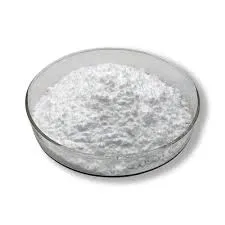
Nov . 11, 2024 23:12 Back to list
hpmc grades and uses
Understanding HPMC Grades and Uses
Hydroxypropyl Methylcellulose (HPMC) is a widely used polymer derived from cellulose, a natural polymer found in plant cell walls. As a non-ionic, water-soluble cellulose ether, HPMC has found extensive applications across various industries, including pharmaceuticals, food, cosmetics, and construction. One of the key attributes of HPMC is its versatility, attributed to the different grades that vary in chemical composition and properties. In this article, we will explore the grades of HPMC and their corresponding uses.
HPMC Grades
HPMC is classified into various grades based on different factors like viscosity, hydroxypropyl content, and methoxy content
. The most common grades include1. Low-Viscosity Grades Typically, these grades have a low molecular weight and viscosity, making them ideal for applications where thickening or gel-forming properties are not required. They are often used in industries for low-viscosity solutions, such as in some food applications and cosmetics.
2. Medium-Viscosity Grades These are the most widely used grades and strike a balance between thickening and film-forming capabilities. They are commonly applied in pharmaceutical formulations, including tablets and coatings, providing desired viscosity and stability.
3. High-Viscosity Grades These grades are characterized by their ability to form highly viscous solutions. They are essential in applications requiring significant thickening or binding properties. High-viscosity HPMC is typically found in pastes and gels used in pharmaceuticals and construction materials.
4. HPMC for Food Applications This grade is specifically designed for food safety and regulatory compliance. It is often used as a thickener, emulsifier, and stabilizer in various food products, offering desirable textural qualities and improved shelf life.
5. Pharmaceutical Grade HPMC This high-purity grade is essential in the pharmaceutical industry. It meets stringent regulatory requirements and is used in drug formulations for controlled release and stabilization of active ingredients.
6. Construction Grade HPMC These grades are tailored for construction applications, providing water retention and improving adhesion in mortars, plasters, and tile adhesives. They enhance workability and performance in construction mixtures.
hpmc grades and uses

Uses of HPMC
1. Pharmaceutical Industry HPMC is widely utilized in the pharmaceutical sector for various purposes. It is used as a thickening agent in topical formulations, as a binder in tablet formulations, and as a coating agent for controlled-release drug formulations. Its ability to form a gel when in contact with water allows for extended release profiles.
2. Food Industry In the food industry, HPMC is employed as a food additive for thickening, binding, and stabilizing. It enhances the texture of frozen foods, sauces, and dressings while acting as a fat replacer in low-fat food products. Its versatility makes it suitable for gluten-free products as well.
3. Cosmetics and Personal Care HPMC is commonly found in cosmetic formulations for its thickening and emulsifying properties. It aids in stabilizing products like creams, lotions, and gels, ensuring a smooth application and enhancing the overall experience for consumers.
4. Construction In construction materials, HPMC serves as a valuable additive in cement-based formulations. It improves water retention, enhances workability, and extends the open time of mortars and tile adhesives, making it easier for contractors to work with these materials.
5. Paints and Coatings HPMC is also utilized in the production of waterborne paints and coatings, where it acts as a thickener and stabilizer, improving the application properties and stability of the products.
6. Other Applications Beyond these primary uses, HPMC is also found in various other fields, including agriculture as a soil conditioner, and in the production of plastics and films.
Conclusion
The diverse grades and uses of HPMC highlight its importance in numerous industries. Its unique properties, such as water solubility, film-forming ability, and thickening capabilities, make it an invaluable resource. Understanding the specific grades of HPMC and their applications allows manufacturers and formulators to choose the right type for their specific needs, ultimately enhancing product performance and consumer satisfaction. As industries continue to evolve, the role of HPMC is likely to expand, paving the way for innovative applications and formulations.
-
Versatile Hpmc Uses in Different Industries
NewsJun.19,2025
-
Redispersible Powder's Role in Enhancing Durability of Construction Products
NewsJun.19,2025
-
Hydroxyethyl Cellulose Applications Driving Green Industrial Processes
NewsJun.19,2025
-
Exploring Different Redispersible Polymer Powder
NewsJun.19,2025
-
Choosing the Right Mortar Bonding Agent
NewsJun.19,2025
-
Applications and Significance of China Hpmc in Modern Industries
NewsJun.19,2025







